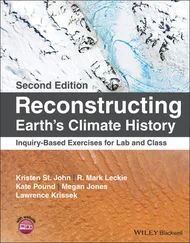John O'Brien - Earth Materials
Здесь есть возможность читать онлайн «John O'Brien - Earth Materials» — ознакомительный отрывок электронной книги совершенно бесплатно, а после прочтения отрывка купить полную версию. В некоторых случаях можно слушать аудио, скачать через торрент в формате fb2 и присутствует краткое содержание. Жанр: unrecognised, на английском языке. Описание произведения, (предисловие) а так же отзывы посетителей доступны на портале библиотеки ЛибКат.
- Название:Earth Materials
- Автор:
- Жанр:
- Год:неизвестен
- ISBN:нет данных
- Рейтинг книги:5 / 5. Голосов: 1
-
Избранное:Добавить в избранное
- Отзывы:
-
Ваша оценка:
- 100
- 1
- 2
- 3
- 4
- 5
Earth Materials: краткое содержание, описание и аннотация
Предлагаем к чтению аннотацию, описание, краткое содержание или предисловие (зависит от того, что написал сам автор книги «Earth Materials»). Если вы не нашли необходимую информацию о книге — напишите в комментариях, мы постараемся отыскать её.
Earth Materials,
Earth Materials,
Earth Materials — читать онлайн ознакомительный отрывок
Ниже представлен текст книги, разбитый по страницам. Система сохранения места последней прочитанной страницы, позволяет с удобством читать онлайн бесплатно книгу «Earth Materials», без необходимости каждый раз заново искать на чём Вы остановились. Поставьте закладку, и сможете в любой момент перейти на страницу, на которой закончили чтение.
Интервал:
Закладка:
4 Chapter 4 Figure 4.1 Representative mineral crystals: representative mineral crystals:... Figure 4.2 (a) Two‐dimensional translation at right angles (t 1and t 2) to ge... Figure 4.3 Five major types of rotational symmetry operations, viewed lookin... Figure 4.4 Two‐ and three‐dimensional motifs that illustrate the concept of ... Figure 4.5 Inversion through a center of symmetry (i) illustrated by the let... Figure 4.6 (a) Mirror plane (m) with the translation vector (t), contrasted ... Figure 4.7 (a) An axis of fourfold rotation (4). This contrasts with (b) an ... Figure 4.8 The 10 plane point groups defined by rotational and reflection sy... Figure 4.9 The five principal types of meshes or nets and their unit meshes ... Figure 4.10 A primitive unit cell and a long‐range space point lattice that ... Figure 4.11 Relationship between (a) atomic packing, (b) a unit cell, and (c... Figure 4.12 The 14 Bravais lattices and the six (or seven) crystal systems t... Figure 4.13 Conventional labeling of crystallographic axes, illustrating the... Figure 4.14 Crystallographic axes (positive ends labeled) and intersection a... Figure 4.15 A pyritohedron, a closed form in which all faces have the same g... Figure 4.16 Different types of dipyramid forms in the trigonal, tetragonal, ... Figure 4.17 (a) Common open forms: pedions, pinacoids, domes, sphenoids, and... Figure 4.18 Representative crystal faces that cut one, two or three crystall... Figure 4.19 Unit face (outlined in solid blue) in an orthorhombic crystal wi... Figure 4.20 Faces with different Weiss parameters on an orthorhombic crystal... Figure 4.21 (a) The darkened front crystal face possesses the Weiss paramete... Figure 4.22 Miller indices of various crystal faces on a cube depend on thei... Figure 4.23 Isometric octahedron outlined in blue possesses eight faces; the... Figure 4.24 Five common forms in the isometric system: (a) cube, (b) octahed... Figure 4.25 Common crystal forms in the tetragonal crystal system: (a) tetra... Figure 4.26 Common crystal forms in the hexagonal crystal system (hexagonal ... Figure 4.27 Common crystal forms in the trigonal system: (a) trigonal dipyra... Figure 4.28 Common crystal forms in the orthorhombic crystal system: (a) rho... Figure 4.29 Monoclinic crystal forms: (a) front, side, and basal pinacoids, ... Figure 4.30 Triclinic crystal forms: (a) front, side, and basal pinacoids, (... Figure 4.31 Examples of twinned crystals: (a) swallowtail twins in gypsum; (... Figure B4.1 (a) Frenkel defect, with a vacancy due to an ion displaced to th... Figure 4.32 (a) Perfect crystal lattice; (b) substitution defect; (c) inters... Figure 4.33 (a) Edge dislocation with an extra half plane of atoms; this is ... Figure 4.34 Two‐dimensional depiction of how an edge dislocation created by ... Figure 4.35 Three types of planar defect (shown in two dimensions): (a) inte... Figure B4.2 (a) Deformation map showing the significant role of omission def... Figure 4.36 Phase stability diagram showing the conditions under which graph... Figure 4.37 The closely similar structures of α‐ and β‐quartz. Figure 4.38 Variations in the order of minerals. Figure 4.39 (a) Hematite replacing pyrite; (b) chalcedony encrusting aragoni...
5 Chapter 5Figure 5.1 Individual crystal habits: A. equant, B. tabular, C. platy, D. pr...Figure 5.2 Crystal aggregate habits, clockwise from upper left: top row: fib...Figure 5.3 Crystal aggregate habits (left to right); top row: massive kaolin...Figure 5.4 Crystals with various percentages of bounding crystal faces. From...Figure 5.5 Types of cleavage exhibited by minerals.Figure 5.6 Examples of mineral cleavage (left to right). Top row: one set of...Figure 5.7 Fracture types, clockwise from upper left: conchoidal fracture in...Figure 5.8 Examples of mineral diaphaneity, top‐down. Left column: opaque mi...Figure 5.9 General relationships between light transmission (diaphaneity), l...Figure 5.10 Metallic and related lusters (opaque and nearly opaque minerals)...Figure 5.11 Nonmetallic lusters (nonopaque minerals) left to right; top row:...Figure 5.12 Clockwise from upper left: asterism in the “Star of India” sapph...Figure 5.13 Basic nesosilicate (orthosilicate) structure with isolated tetra...Figure 5.14 Basic unit of sorosilicate structure; pairs of silica tetrahedra...Figure 5.15 Triangular, square, and hexagonal ring structures in cyclosilica...Figure 5.16 Single‐chain inosilicate structure in pyroxene.Figure 5.17 Double‐chain silicate structure in amphiboles.Figure 5.18 Two‐dimensional sheet structure typical of phyllosilicate minera...Figure 5.19 (a) Two‐layer (t‐o or t‐b) structure of serpentine. (b) Three‐la...Figure 5.20 Three‐dimensional framework structures typical of tectosilicates...
6 Chapter 6Figure 6.1 The electrical (E, in red) and magnetic (B, in yellow) components...Figure 6.2 The continuous electromagnetic spectrum showing the wavelengths, ...Figure 6.3 Ordinary light vibrates in all directions perpendicular to the di...Figure 6.4 Incident light is reflected (blue arrow) from a surface between t...Figure 6.5 The dispersion of white light into different parts of the visible...Figure 6.6 A standard petrographic microscope with the major components iden...Figure 6.7 The essential steps in thin‐section preparation. (a) A chip with ...Figure 6.8 Plane polarized light photomicrograph of plutonic igneous rock (g...Figure 6.9 Plane polarized light from the polarizer is split into a fast ray...Figure 6.10 A modified version of the Michel–Levy Color Chart for interferen...Figure 6.11 Photomicrograph of a thin‐section of gabbro viewed in cross‐pola...Figure 6.12 Diagram shows the correspondence between extinction positions an...Figure 6.13 Sanidine crystal (clear, low birefringence) showing simple compo...Figure 6.14 Crossed‐polars photomicrograph of microcline crystal that displa...Figure 6.15 Crossed‐polars photomicrograph of diorite (see Figure 6.8 for pl...Figure 6.16 Crossed‐polars photomicrograph of a volcanic rock. Large plagioc...Figure 6.17 Crossed‐polars photomicrograph of a quartz crystal near the exti...Figure 6.18 Crossed‐polars photomicrograph of perthite. Exsolved plagioclase...Figure 6.19 A cross‐section through a typical ellipsoidal indicatrix showing...Figure 6.20 Isotropic indicatrix shows sample ray paths “a” (parallel to Y‐a...Figure 6.21 (a) Prolate uniaxial indicatrix with a vertical long axis (blue)...Figure 6.22 Uniaxial positive indicatrix and three major types of section. (...Figure 6.23 Uniaxial positive indicatrix. The crystal c‐axis is vertical and...Figure 6.24 Uniaxial negative indicatrix. The crystal c‐axis is vertical and...Figure 6.25 Centered optic axis figures for uniaxial minerals display two is...Figure 6.26 Use of the gypsum plate for optic sign determinations of uniaxia...Figure 6.27 Use of the quartz wedge for optic sign determinations in mineral...Figure 6.28 The orientation of the uniaxial indicatrix (epsilon and omega vi...Figure 6.29 The general relationships between the three axes (X, Y, and Z) o...Figure 6.30 Diagram that depicts two circular sections (with refractive inde...Figure 6.31 Depiction of simplified versions of the positive and negative bi...Figure 6.32 An acute bisectrix figure for a biaxial mineral with a moderate ...Figure 6.33 (a) The appearance of a Bxa interference figure for a biaxial (+...Figure 6.34 (a) The appearance of a Bxa interference figure for a biaxial (+...Figure 6.35 Depicts centered optic axis figures in a position of maximum cur...Figure 6.36 Gypsum plate determination of optic sign, using a biaxial center...Figure 6.37 Bxo figure and the orientation of the optic normal and optic pla...
7 Chapter 7Figure 7.1 Common igneous minerals. Ferromagnesian minerals include olivine,...Figure 7.2 Rock classification based upon percentage of dark‐colored mineral...Figure 7.3 (a) Common phaneritic (coarse crystals) and aphanitic (fine cryst...Figure 7.4 Basalt porphyry containing euhedral and subhedral plagioclase cry...Figure 7.5 Granite pegmatite with K‐feldspar, beryl, quartz, and hornblende....Figure 7.6 Coarse‐grained phaneritic granite with early formed, euhedral to ...Figure 7.7 Aphanitic dacite from Mt. St. Helens 2004 dome eruption. Dacite c...Figure 7.8 (a) Porphyritic phaneritic texture with large pink K‐feldspar phe...Figure 7.9 Temperature–pressure relations depicting solid, solid plus liquid...Figure 7.10 Plagioclase phase diagram illustrating crystalline textures that...Figure 7.11 (a) Graph depicts viscosity versus temperature for five differen...Figure 7.12 Grain boundary alteration and crystal coarsening is produced by ...Figure 7.13 Snowflake obsidian displaying cristobalite seed crystals as well...Figure 7.14 Cross‐bedded vesicular pumice bomb ejected by the 1980 eruption ...Figure 7.15 At depth within the magma pluton, gases are dissolved within the...Figure 7.16 Amygdaloidal basalt in which vesicles have been infilled with qu...Figure 7.17 (a) IUGS classification for pyroclastic rocks based on diameter ...Figure 7.18 Angular volcanic blocks from explosive eruptions at Kilauea, Haw...Figure 7.19 Unwelded ashfall deposits from explosive volcanic eruptions.Figure 7.20 Partially welded ash flow tuff deposit.Figure 7.21 Densely welded tuff deposit.Figure 7.22 (a) The eight major elements in Earth's crust by weight percent,...Figure B7.1 Large ion lithophile elements contain an ionic charge/ionic radi...Figure 7.23 QAPF diagram for plutonic igneous rocks with >10% felsic mineral...Figure 7.24 Modal classification of gabbroic rocks based on proportions of t...Figure 7.25 Modal classification of ultramafic plutonic rocks based on the p...Figure 7.26 Simplified rock classification proposed by Glazner et al. (2019)...Figure 7.27 QAPF diagram for volcanic igneous rocks with >10% felsic mineral...Figure 7.28 (a) Alkali oxide versus silica (TAS) classification diagram for ...
Читать дальшеИнтервал:
Закладка:
Похожие книги на «Earth Materials»
Представляем Вашему вниманию похожие книги на «Earth Materials» списком для выбора. Мы отобрали схожую по названию и смыслу литературу в надежде предоставить читателям больше вариантов отыскать новые, интересные, ещё непрочитанные произведения.
Обсуждение, отзывы о книге «Earth Materials» и просто собственные мнения читателей. Оставьте ваши комментарии, напишите, что Вы думаете о произведении, его смысле или главных героях. Укажите что конкретно понравилось, а что нет, и почему Вы так считаете.












